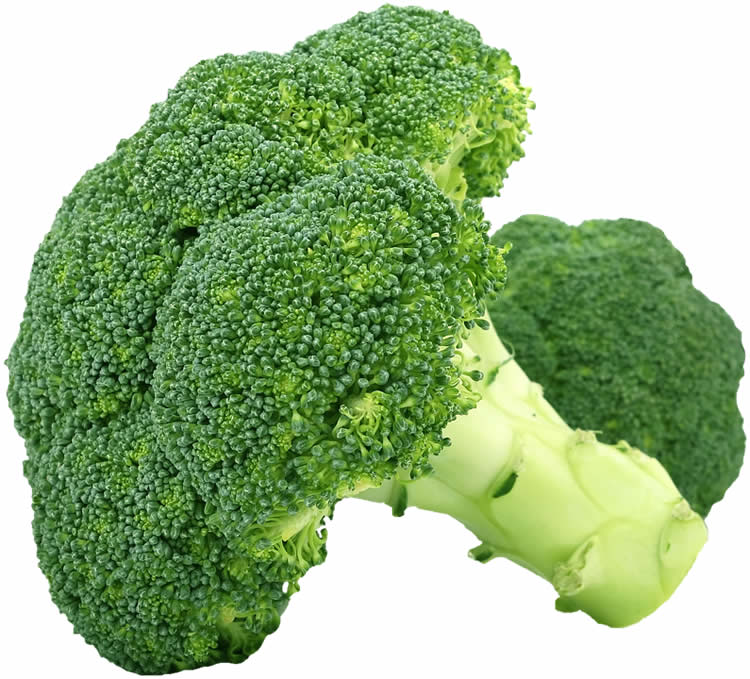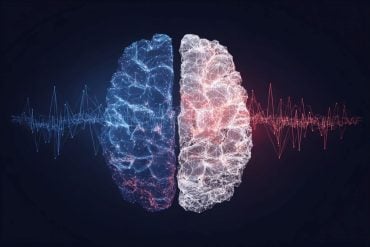Summary: A new study links the consumption of lutein, a pigment found in leafy greens, to crystallized intelligence in older adults.
Source: University of Illinois at Urbana-Champaign.
A study of older adults links consumption of a pigment found in leafy greens to the preservation of “crystallized intelligence,” the ability to use the skills and knowledge one has acquired over a lifetime.
The study is reported in the journal Frontiers in Aging Neuroscience.
Lutein (LOO-teen) is one of several plant pigments that humans acquire through the diet, primarily by eating leafy green vegetables, cruciferous vegetables such as broccoli, or egg yolks, said University of Illinois graduate student Marta Zamroziewicz, who led the study with Illinois psychology professor Aron Barbey. Lutein accumulates in the brain, embedding in cell membranes, where it likely plays “a neuroprotective role,” she said.
“Previous studies have found that a person’s lutein status is linked to cognitive performance across the lifespan,” Zamroziewicz said. “Research also shows that lutein accumulates in the gray matter of brain regions known to underlie the preservation of cognitive function in healthy brain aging.”
The study enrolled 122 healthy participants aged 65 to 75 who solved problems and answered questions on a standard test of crystallized intelligence. Researchers also collected blood samples to determine blood serum levels of lutein and imaged participants’ brains using MRI to measure the volume of different brain structures.
The team focused on parts of the temporal cortex, a brain region that other studies suggest plays a role in the preservation of crystallized intelligence.
The researchers found that participants with higher blood serum levels of lutein tended to do better on tests of crystallized intelligence. Serum lutein levels reflect only recent dietary intakes, Zamroziewicz said, but are associated with brain concentrations of lutein in older adults, which reflect long-term dietary intake.
Those with higher serum lutein levels also tended to have thicker gray matter in the parahippocampal cortex, a brain region that, like crystallized intelligence, is preserved in healthy aging, the researchers report.

“Our analyses revealed that gray-matter volume of the parahippocampal cortex on the right side of the brain accounts for the relationship between lutein and crystallized intelligence,” Barbey said. “This offers the first clue as to which brain regions specifically play a role in the preservation of crystallized intelligence, and how factors such as diet may contribute to that relationship.”
“Our findings do not demonstrate causality,” Zamroziewicz said. “We did find that lutein is linked to crystallized intelligence through the parahippocampal cortex.”
“We can only hypothesize at this point how lutein in the diet affects brain structure,” Barbey said. “It may be that it plays an anti-inflammatory role or aids in cell-to-cell signaling. But our finding adds to the evidence suggesting that particular nutrients slow age-related declines in cognition by influencing specific features of brain aging.”
Barbey is an affiliate of the Carl R. Woese Institute for Genomic Biology and the Beckman Institute for Advanced Science and Technology at the U. of I.
The research team also included Beckman Institute postdoctoral researchers Erick Paul and Chris Zwilling; psychology professor Neal Cohen, also at Beckman; Elizabeth Johnson, of Tufts University; and Matthew Kuchan, of Abbott Nutrition.
Funding: Abbott Nutrition supported this work through the Center for Nutrition, Learning and Memory at the U. of I. in Urbana-Champaign.
Source: Diana Yates – University of Illinois at Urbana-Champaign
Image Source: NeuroscienceNews.com image is in the public domain.
Original Research: Full open access research for “Parahippocampal Cortex Mediates the Relationship between Lutein and Crystallized Intelligence in Healthy, Older Adults” by Marta K. Zamroziewicz, Erick J. Paul, Chris E. Zwilling, Elizabeth J. Johnson, Matthew J. Kuchan, Neal J. Cohen and Aron K. Barbey in Frontiers in Aging Neuroscience. Published online December 6 2016 doi:10.3389/fnagi.2016.00297
[cbtabs][cbtab title=”MLA”]University of Illinois at Urbana-Champaign “Nutrition Linked to Intelligence and Brain Health in Older People.” NeuroscienceNews. NeuroscienceNews, 13 December 2016.
<https://neurosciencenews.com/nutrition-aging-intelligence-5737/>.[/cbtab][cbtab title=”APA”]University of Illinois at Urbana-Champaign (2016, December 13). Nutrition Linked to Intelligence and Brain Health in Older People. NeuroscienceNew. Retrieved December 13, 2016 from https://neurosciencenews.com/nutrition-aging-intelligence-5737/[/cbtab][cbtab title=”Chicago”]University of Illinois at Urbana-Champaign “Nutrition Linked to Intelligence and Brain Health in Older People.” https://neurosciencenews.com/nutrition-aging-intelligence-5737/ (accessed December 13, 2016).[/cbtab][/cbtabs]
Abstract
Parahippocampal Cortex Mediates the Relationship between Lutein and Crystallized Intelligence in Healthy, Older Adults
Introduction: Although, diet has a substantial influence on the aging brain, the relationship between dietary nutrients and aspects of brain health remains unclear. This study examines the neural mechanisms that mediate the relationship between a carotenoid important for brain health across the lifespan, lutein, and crystallized intelligence in cognitively intact older adults. We hypothesized that higher serum levels of lutein are associated with better performance on a task of crystallized intelligence, and that this relationship is mediated by gray matter structure of regions within the temporal cortex. This investigation aims to contribute to a growing line of evidence, which suggests that particular nutrients may slow or prevent aspects of cognitive decline by targeting specific features of brain aging.
Methods: We examined 76 cognitively intact adults between the ages of 65 and 75 to investigate the relationship between serum lutein, tests of crystallized intelligence (measured by the Wechsler Abbreviated Scale of Intelligence), and gray matter volume of regions within the temporal cortex. A three-step mediation analysis was implemented using multivariate linear regressions to control for age, sex, education, income, depression status, and body mass index.
Results: The mediation analysis revealed that gray matter thickness of one region within the temporal cortex, the right parahippocampal cortex (Brodmann’s Area 34), partially mediates the relationship between serum lutein and crystallized intelligence.
Conclusion: These results suggest that the parahippocampal cortex acts as a mediator of the relationship between serum lutein and crystallized intelligence in cognitively intact older adults. Prior findings substantiate the individual relationships reported within the mediation, specifically the links between (i) serum lutein and temporal cortex structure, (ii) serum lutein and crystallized intelligence, and (iii) parahippocampal cortex structure and crystallized intelligence. This report demonstrates a novel structural mediation between lutein status and crystallized intelligence, and therefore provides further evidence that specific nutrients may slow or prevent features of cognitive decline by hindering particular aspects of brain aging. Future work should examine the potential mechanisms underlying this mediation, including the antioxidant, anti-inflammatory, and membrane modulating properties of lutein.
“Parahippocampal Cortex Mediates the Relationship between Lutein and Crystallized Intelligence in Healthy, Older Adults” by Marta K. Zamroziewicz, Erick J. Paul, Chris E. Zwilling, Elizabeth J. Johnson, Matthew J. Kuchan, Neal J. Cohen and Aron K. Barbey in Frontiers in Aging Neuroscience. Published online December 6 2016 doi:10.3389/fnagi.2016.00297






